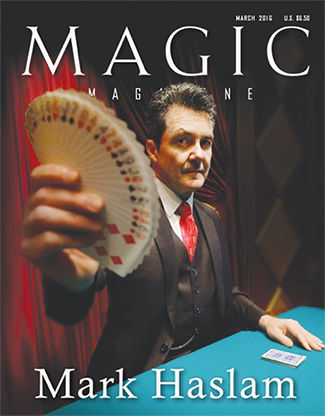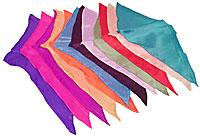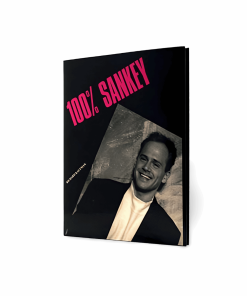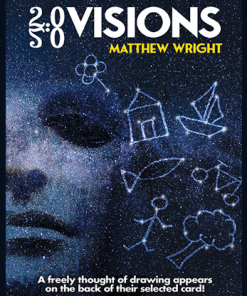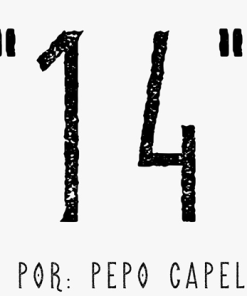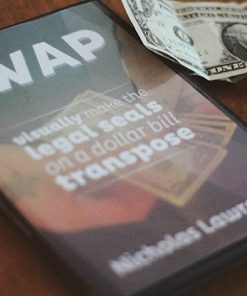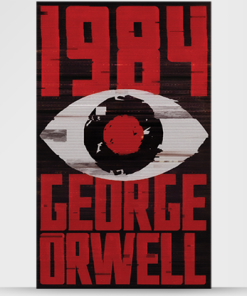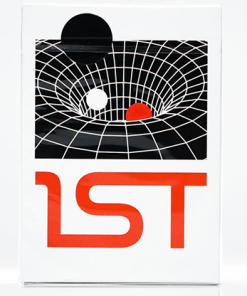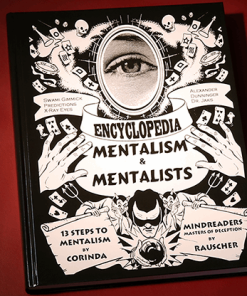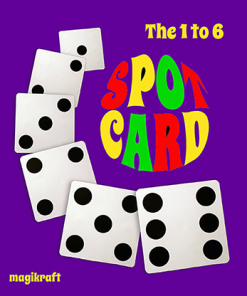Magic Magazine “Mark Haslam” March 2016 – Book Murphy’s Magic Supplies, Inc.
$ 9,95 $ 5,97
CONTENTS
MARCH 2016
VOLUME 25
NUMBER 7
Mark Haslam: A Class Act
By Gordon Bean
Presenting magic that is both effective and entertaining, Mark Haslam is not just a magician you will likely hear more about in the near future, he has already been a busy international act and a favorite among other famous magicians for several decades.
May I Have the Envelope, Please
By Jaq Greenspon
This “Behind-the-Podium Look at Magic Awards” examines the accolades given out to the international magic community each year by five prominent organizations – recognitions that may have different impact among magicians and the lay public.
Building a Career
By Rory Johnston
Ventriloquist, magician, show producer and promoter, hypnotist, and more, Daniel Summers may be best known as a designer and builder of illusions, but what he has really been crafting is a career in numerous aspects of magic.
Discover Magic – With Magic
By Rory Johnston
Discover Magic is more than just a series of packaged magic lessons for kids; Michael Ammar, Brian South, and Michael Rosander have established a way to teach magic with a new perspective. It is “a life-skills course camouflaged as a magic class.”
Plus Updates on…
- Sarlot & Eyed’s Carnival of Illusion.
- A new location for Magic Inc.
- An exhibit and show on “150 Years of Jewish Magicians.”
- David Ben’s new look to raise money for cancer research.
- Remembrances of Jerry Mentzer and Jim Patton.
Bonus Content for the March Issue…
- Template for Martin Lewis’ Grail stand.
- All 24 of the products reviewed in the March issue, plus 567 reviews from previous issues, are all now available at the fully searchable “Marketplace” section of M360.
Marketplace
Twenty-four products are reviewed this month by Michael Claxton, Peter Duffie, Gabe Fajuri, Jared Kopf, Francis Menotti, Peter Pitchford, John Wilson:
Fred’s Mental Miracle by Barry Schor
Anniversary Waltz Project by Doc Eason and Garrett Thomas
Implausibilities by Hudson Taylor
Induction by Spidey
The Magicianary Position by Arron Jones
Locked by Jim Kleefeld
Magic by Miller by Donald Croucher
Contained by Jay Sankey
An Unexpected Triumph by Magician Anonymous
Scarlet Monte by Malcolm Norton
The Complete Card Manipulation Set by Vernet
The Zig-Zag Girl by Robert Harbin
Any Jacket Dove Pocket by Daniel Ka
Automatic Dove Bag by Daniel Ka
Ultimate Invisible Dove Harness by Daniel Ka
Cash Converter by Richard Griffin
Exquisite by Michael Ammar and Dirk Losander
Hustle by Juan Marcos
Decon by Danny Weiser
Enlighten by Ravi Mayar
Transfuze by Peter Eggink
Digital Twin by SansMinds Creative Lab
Intro to Sponge Balls by Michael Dardant
Gift Card by Constantinos Pantelias
Making Magic: The Grail
Martin Lewis
This is my stage version of the Berglas Effect, designed for lay audiences. I play fast and loose with the actual effect and use dual reality, sleight of hand, and a neat little prop to accomplish it. An oddity about the Any Card at Any Number plot is that while it fascinates magicians, it doesn’t appeal to laypeople so much. My presentation uses this to create audience interest by giving them a look at what interests magicians. It also features a lovely dramatic moment that really drives the effect home.
Loving Mentalism: Tossed Out Darts
Ian Rowland
Guest contributor Patrik Kuffs submitted this month’s item, which blends the familiar Tossed Out Deck plot with divination via darts! It’s a fun, versatile, and creative piece of mental magic that plays well just about anywhere. If you don’t want to use cards, you don’t have to. You can adapt the routine so there aren’t any playing cards involved. But what if you’re not very good at throwing darts? Relax. Patrik has all the angles covered, and he shows you how to bring the routine to a successful conclusion even if you miss the intended target.
Bent on Deception: The Point of No Return
Mike Bent
When you are performing magic for kids – or anyone, for that matter – you need to put yourself into the helper’s shoes and anticipate any problems that can occur with a routine. And because it’s impossible to anticipate every problem, you need to learn from your mistakes and realize that they are just that – your mistakes. Occasionally a volunteer can just be difficult, but those occasions are rare and, again, partially your fault – you picked them. We can also learn to avoid tricks that flirt with The Point of No Return – tricks that once you start, you have to finish.
The Monk’s Way: Finally Final Aces
Steve Reynolds
I was on the phone with Jon Racherbaumer in the mid ’90s, and our conversation moved to Hamman’s Final Aces. Jon confided that his mentor had a version that could be done with no gimmicks, no duplicates, with a borrowed deck, and performed surrounded. I’ve never seen that version of Final Aces, but the idea of it stuck with me. Eventually, I had a eureka moment when working through Marlo’s Trilogy in Blue. This Technicolor version had multiple phases and took full advantage of the assumptions of the audience. Specifically, the audience assumes that the Aces have blue backs, and the twelve indifferent cards are red. If the spectators see the face-up Aces, they assume that the four cards have blue backs. By the same token, if they see four blue backs, they assume that the cards are Aces. Marlo’s approach spurred this month’s offering in “The Monk’s Way,” which uses a different strategy to strengthen the assumptions.
Classic Correspondence: Kellar to Thurston
Mike Caveney
This marks the 72nd letter that has appeared under the “Classic Correspondence from Egyptian Hall Museum” banner. After many months of writing about little-known or completely unknown magicians, I have chosen to finish off this group of letters with two towering figures in American magic. It would be difficult to imagine two more important names from the Golden Age of Magic than Harry Kellar and Howard Thurston. Kellar became the uncontested master of American magic, a role that he filled magnificently until his retirement in 1908, naming Howard Thurston as his successor. Kellar stayed in touch with his young protg, wanting to know how his crowds were, suggesting new material for his show, and passing along the latest gossip. His chatty letters from this period were always handwritten on custom-printed notecards that folded in half.
For What It’s Worth: Clap For Me
Mark Kornhauser
Forced applause is the scourge of the entertainment world. Forced applause takes away the meaning from genuinely appreciative applause. Forced applause means the entertainer cares more about the appearance of success than the experience of a genuine connection. Even though natural appreciation is a more gratifying experience for the audience, clap-addict performers insist that the audience must continually demonstrate its approval. Standing ovations, also, are often shrewdly manufactured. I’ve known a few magicians who do not feel it beneath them to employ time-honored techniques to encourage a “Standing O.”
Walkabout Soup: A7 Flyers: The Guerrilla Marketing Secret Weapon
Simon Coronel
One of the best pieces of advice I was ever given for promoting a show was to give a flyer to every human being you interact with. Buying coffee? Give the barista flyer. Someone asks you for the time? Tell them, then give them a flyer. You never know who will turn out to have a big group of friends itching for a show to see. However, to do this, it helps to have flyers on you at all times. Conventional postcard-sized flyers or postcards make this tricky unless you’re carrying a bag, and even then there will be moments when you’re bag-free and flyerless. The best flyer approach I’ve found is to design your flyers in A7 size.
| Default Title | Default Title |
|---|
Fast shipping and professional packing
Because of our long-standing relationship with UPS FedEx DHL, and other major global carriers, we are able provide various shipping options. Our warehouse personnel will pack each item according to our strict specifications. Prior to shipping the goods are thoroughly inspected and secured. Every day we ship hundreds of packages to our customers across many countries. The fact that we're dedicated to becoming the largest online retailer in the world is evident. The warehouses and centers of distribution are in Europe and the USA.
Note that orders containing more than one item are processed according to the particular item.
We will inspect each and every one of the products before they are shipped. Today, the majority orders will be shipped within 48 hours. The delivery time will be between 3-7 working days.
Returns
The stock market is always changing. It's not entirely managed by us, since we are involved with multiple organizations, such as the factory and the storage. The actual levels of stock can change at any time. Please understand it may happen that your order is out of stock when the order has been placed.
Our policy runs for a period of 30 days. However, if the 30 days have elapsed from the date you purchased the product, we are unable to give you a refund or exchange.
For your item to be eligible for return, it must be unopened and in the condition you received it in. It should also be in the original packaging.
Related products
Playing Cards
2021 Summer Collection: Mountain Playing Cards by CardCutz Murphy’s Magic Supplies, Inc.
Playing Cards
2021 Summer Collection: Jungle Playing Cards by CardCutz Murphy’s Magic Supplies, Inc.
